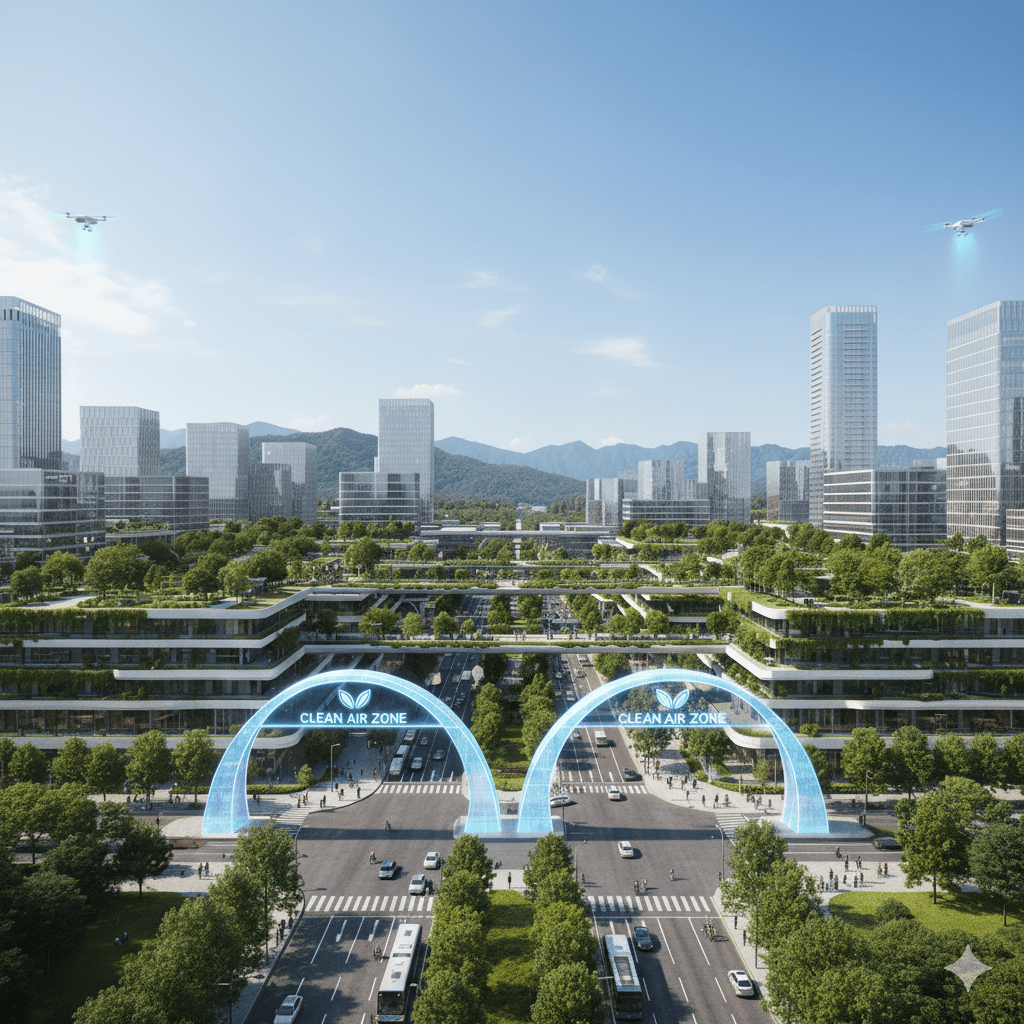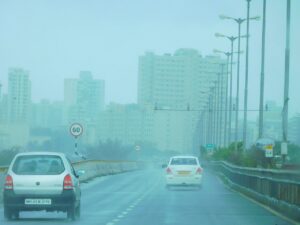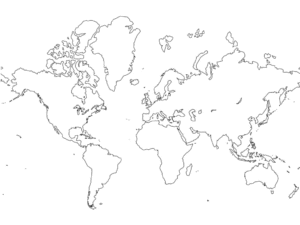Nationally, it is seen that the non-attainment cities are working towards improving air quality through various measures targeting several sectors. The control measures range from the odd-even vehicle scheme targeting the transport sector in Delhi, deployment of anti-smog guns in the construction and road dust sector in Noida, Gurugram, and Faridabad, expansion of CNG in public transport in Lucknow, Ahmedabad, and Jaipur, promotion of electric vehicles (EVs) in the vehicular emission sector in Hyderabad, Pune, and Bengaluru, technological upgrade of brick kilns in the industrial sector in Patna, Varanasi, and Ghaziabad, ban on open waste burning in the waste management sector in Chandigarh, Agra, and Nagpur, to name a few. While these are a few sectoral interventions, Artha Global took an interesting approach to improving air quality in the selected cities of Vijayawada and Visakhapatnam which were informed by various factors.
While I am working first-hand on this project, I draw upon my observations during this learning journey and try to answer the arising questions like; How does a policy think-tank approach an issue? What are the guide rails considered? How does it ideate and advocate an approach to the Indian cities?
The NCAP outlines seven thematic areas under its program which are; Air quality data, Waste and biomass – dumping and burning, Industries, Vehicles, Road dust, Construction & demolition, Public outreach, Capacity building, Monitoring network and Source Apportionment. The problem of air quality was first approached by bringing the issue to the discussion table in the two cities.
An approach called the “Clean Air Zones (CAZ)” was identified to tackle air pollution which provides a “spatial” direction instead of a sectoral or a targeted direction to improve air quality. The spatial direction offers an advantage of viewing the intervention through a broader lens than a specific control measure proposal which has been the case in the other non-attainment cities. A CAZ or Low Emission Zone (LEZ) is defined as an area within a city where a local authority has brought measures into place to improve the air quality. CAZ are seen as designated urban areas where targeted control measures are implemented to improve local air quality which may include charging fees for vehicles that do not meet established emission standards, restricting access for high-polluting vehicles, and promoting cleaner alternatives. While primarily CAZ is a transport-sector intervention, its ripple effects can drive behavioral and operational changes across multiple urban sectors. Some broader clean air strategies may combine CAZs with additional industrial, residential, and construction controls, but the CAZ itself is seen as transport-centric by design. London’s LEZ or sometimes CAZ (Clean Air Zone – the terms are used interchangeably) and Ultra Low Emission Zone (ULEZ) have effectively delivered measurable air quality improvements. In particular, the LEZ launched in 2008 helped reduce PM₁₀ levels by around 13% in Greater London between 2008 and 2013. Borrowing London’s successful adoption, CAZ was chosen as the initiative to approach the two Indian cities.
Considering that such an initiative has not been implemented in an Indian city, the CAZ implementation would stand as a pilot project once implemented. Introduction of CAZ as an intervention, through its international success story, brings with it the hesitancy of considering it for adoption by Indian cities. Artha Global tackled this through bringing-in experts from Transport for London (TfL)(implementing partner for LEZ) to share their success story. While the first year of the project involved onboarding the two cities, it also focused on socialising the idea of CAZs through workshops and consultations with city officials, all relevant stakeholders in the cities. Workshops by TfL were conducted with the stakeholders to develop a detailed roadmap for CAZ implementation and the cities also signed up for Phase 2 of the initiative.
This marked the initial steps of breaking the hesitancy barrier to accept a new direction to policy adoption as well as embrace the internationally proven best practice.


